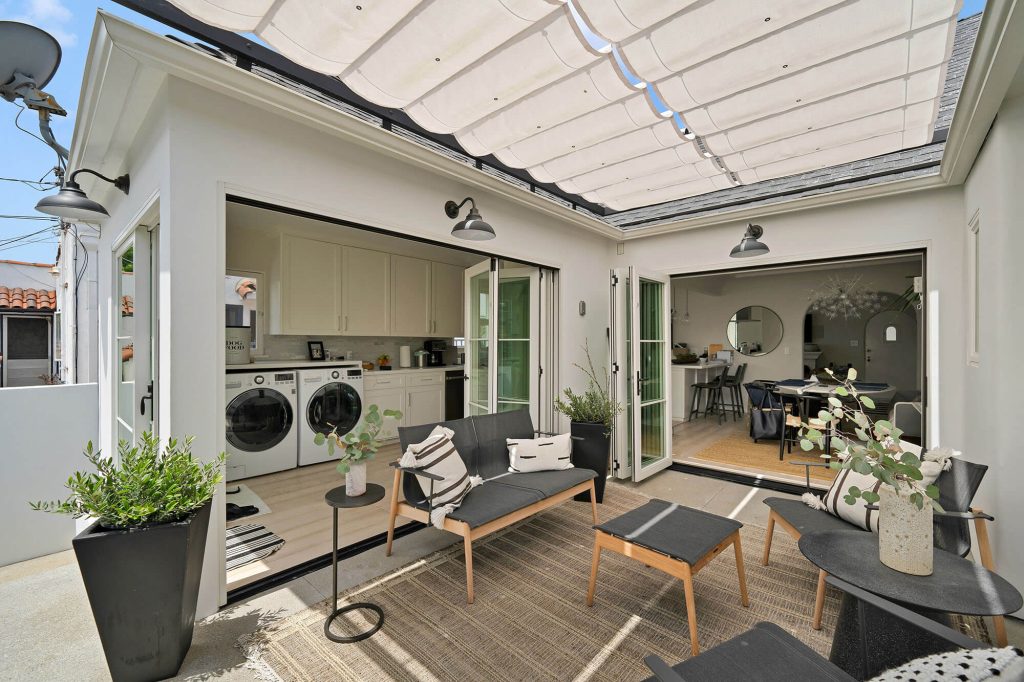
ADU Permit Timelines in Los Angeles
December 16, 2024
ADU Permit Timelines in Los Angeles: How Long Does It Take?

ADU Permit Timelines in Los Angeles: Accessory Dwelling Units (ADUs) have become increasingly popular in Los Angeles as a solution to the housing shortage and as a way for homeowners to generate additional income. If you’re considering adding an ADU to your property, one of the first questions you might have is: How long does it take to get an ADU permit in Los Angeles? Understanding the permitting process and timeline is crucial for planning your project effectively. This comprehensive guide will walk you through the steps involved and provide insights into the factors that can affect the permitting timeline.
Table of Contents
- Introduction to ADUs in Los Angeles
- Understanding the ADU Permitting Process
- Pre-Permit Preparation
- Submitting Your Permit Application
- Plan Check and Review Stages
- Common Factors Affecting Permit Timelines
- Tips to Expedite the Permitting Process
- Estimated Timeline Breakdown
- Frequently Asked Questions
- Conclusion
1. Introduction to ADUs in Los Angeles
An Accessory Dwelling Unit (ADU) is a secondary housing unit on a single-family residential lot. ADUs can be attached or detached from the primary residence and are often used as rental units, guest houses, or living spaces for family members.
In Los Angeles, recent changes in state and local laws have made it easier for homeowners to build ADUs. However, the permitting process can still be complex and time-consuming if not approached correctly.
2. Understanding the ADU Permitting Process
The Los Angeles Department of Building and Safety (LADBS) is responsible for issuing permits for ADUs. The permitting process involves several stages, including:
- Preliminary Research and Planning
- Application Submission
- Plan Check and Corrections
- Permit Issuance
- Inspections During Construction
- Final Approval and Certificate of Occupancy
Each stage has its own requirements and timelines, which we’ll explore in detail.
3. Pre-Permit Preparation
a. Feasibility Study
Before starting the permit application, conduct a feasibility study to ensure your property is eligible for an ADU. Consider factors like:
- Zoning Regulations
- Lot Size and Coverage
- Setback Requirements
- Parking Requirements
b. Design and Planning
Hire a licensed architect or designer to create detailed plans that comply with building codes and zoning laws. This includes:
- Architectural Plans
- Structural Calculations
- Site Plans
- Energy Calculations (Title 24 Reports)
c. Pre-Submittal Review (Optional)
You can request a pre-submittal meeting with LADBS to review your plans for compliance, which can help identify potential issues early.
Estimated Time: 2 to 4 weeks (varies based on your preparation and design process)
4. Submitting Your Permit Application
a. Online or In-Person Submission
LADBS offers both online and in-person permit submissions. Online submissions can be more convenient but may still require in-person visits for certain documents.
b. Required Documents
- Completed Permit Application
- Plan Sets (usually 3 copies)
- Structural Calculations
- Title 24 Energy Compliance Documentation
- Soil Reports (if necessary)
Estimated Time: Immediate upon submission, but appointment scheduling may take 1 to 2 weeks.
5. Plan Check and Review Stages
a. Initial Plan Check
A plan checker reviews your submitted plans for compliance with:
- Building Codes
- Zoning Regulations
- Structural Requirements
- Energy Efficiency Standards
b. Corrections and Revisions
It’s common to receive correction notices requiring revisions to your plans. You’ll need to address these corrections and resubmit.
c. Inter-Departmental Reviews
Your plans may also be reviewed by other departments, such as:
- Planning Department
- Fire Department
- Public Works
Estimated Time:
- First Review: Approximately 4 to 6 weeks
- Subsequent Reviews: 2 to 4 weeks per resubmittal
Total Plan Check Duration: 6 to 12 weeks, depending on the number of revisions needed.
6. Common Factors Affecting Permit Timelines
Several factors can influence how long it takes to get your ADU permit:
a. Complexity of the Project
- Custom Designs vs. Standard Plans
- Structural Complexity
- Site Conditions (hillside, soil stability, etc.)
b. Quality of Initial Submission
- Completeness of Plans
- Compliance with Codes and Regulations
- Accuracy of Calculations and Documentation
c. Workload of LADBS
- Seasonal Variations
- Staffing Levels
- Backlogs
d. Response Time to Corrections
- Efficiency in Making Required Revisions
- Timely Resubmission of Plans
7. Tips to Expedite the Permitting Process
a. Hire Experienced Professionals
Working with architects and contractors familiar with Los Angeles ADU regulations can significantly reduce errors and delays.
b. Pre-Approved Standard Plans
Consider using LADBS pre-approved ADU standard plans, which can expedite the review process.
c. Thorough Initial Submission
Ensure all required documents are complete and compliant to minimize corrections.
d. Stay Proactive
- Regularly Follow Up with LADBS
- Promptly Address Corrections
- Maintain Open Communication with All Parties
8. Estimated Timeline Breakdown
Here’s a general timeline for obtaining an ADU permit in Los Angeles:
- Design and Planning: 2 to 4 weeks
- Initial Plan Check: 4 to 6 weeks
- Revisions and Resubmission: 2 to 4 weeks per cycle
- Permit Issuance: 1 week after final approval
Total Estimated Time: 8 to 16 weeks
Note: This timeline is an estimate and can vary based on the factors discussed.
9. Frequently Asked Questions
Q1: Can I start construction before obtaining the permit?
A: No. Starting construction without a permit can result in fines and may require you to undo completed work.
Q2: Are there any fees associated with the ADU permit process?
A: Yes. Permit fees vary based on the project’s valuation and scope. Fees may include plan check fees, permit fees, school district fees, and others.
Q3: Can I expedite the permit process?
A: LADBS offers an “Expedited Plan Check” service for an additional fee, which can reduce review times.
Q4: Do I need to notify my neighbors about my ADU project?
A: While not always required, it’s a good practice to inform neighbors to maintain good relations and address any concerns.
10. Conclusion
Obtaining an ADU permit in Los Angeles typically takes 8 to 16 weeks, depending on various factors such as project complexity, quality of submissions, and LADBS workload. By understanding the permitting process and proactively addressing potential hurdles, you can navigate the system more efficiently.
Building an ADU is a significant investment, but with careful planning and the right team, it can be a rewarding addition to your property. If you’re ready to embark on this journey, consider reaching out to professionals who specialize in ADU projects to guide you through the process.
Need Assistance with Your ADU Project?
Our experienced team is here to help you every step of the way, from initial design to final inspection. Contact us today for a free consultation.
For more information on ADU Permits, you can look at the LA County Planning website LA County lanning
Additional Resources:
- Choosing the Design of an Accessory Dwelling Unit: Tips and Ideas
- Unlocking the Benefits of Building an ADU in your Backyard
- ADU Regulations in California
- ADU Terminology: A Complete Guide
- ADU Architects: A Comprehensive Guide
- ADU Size Limits in Los Angeles
- 10 Mistakes You’re Making On Your ADU Project
- Granada Hills ADU: 10 Reasons Why to Build
Our Service Areas
We are serving Los Angeles metro area. Our service area includes, but is not limited to the following locations: Agoura Hills, Altadena, Arcadia, Atwater Village, Bel Air, Beverly Hills, Beverlywood, Brentwood, Burbank, Calabasas, Camarillo, Canoga Park, Century City, Country Club Park, Culver City, Eagle Rock, Echo Park, Encino, Glassell park, Glendale, Hancock Park, Highland Park, Hollywood, Hollywood Hills, La Brea, La Canada Flintridge, La Crescenta-Montrose, Los Feliz, Manhattan Beach, Mar Vista, Marina del Rey, Melrose, MidCity, Miracle Mile, Moorpark, Newbury Park, Oak Park, Pacific Palisades, Palos Verdes, Pasadena, Playa del Rey, Cheviot Hills, Santa Monica, Sherman Oaks, Silver Lake, Stevenson Ranch, Studio City, Tarzana, Thousand Oaks, Toluca Lake, Topanga, Valley Village, Van Nuys, Venice, West Hills, West Hollywood, Westchester, Westlake Village, Windsor Hills, Woodland Hills


